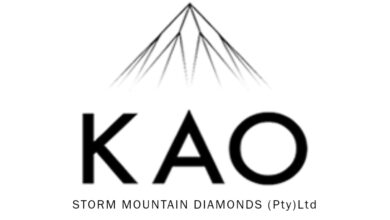What to Look Out for When Analyzing Lesotho’s Economic Stability

Analyzing the economic stability of Lesotho, a small, landlocked country in Southern Africa, involves examining various factors that contribute to its economic health and resilience. Investors, policymakers, and analysts need to consider a range of indicators and contextual elements to form a comprehensive view. Here are key aspects to look out for when evaluating Lesotho’s economic stability.
1. Gross Domestic Product (GDP) Growth
Assess the trends in Lesotho’s GDP growth over recent years. Consistent positive growth indicates a stable and expanding economy. It’s also important to look at the GDP per capita to understand how economic growth translates to individual prosperity.
2. Inflation Rate
Monitor the inflation rate, as high inflation can erode purchasing power and savings, destabilizing the economy. Moderate, stable inflation suggests a well-managed economy, whereas volatile or high inflation can signal underlying economic issues.
3. Employment Rates
Examine employment rates and labor market conditions. High unemployment or underemployment rates can indicate economic distress and social instability. Pay attention to the quality of jobs available, not just the quantity.
4. Foreign Direct Investment (FDI)
Evaluate trends in FDI, as consistent inflows of foreign investment reflect confidence in the country’s economic environment. Assess the sectors attracting FDI and the policies in place to encourage foreign investment.
5. External Debt and Fiscal Policy
Consider Lesotho’s external debt levels and fiscal policy. High levels of debt relative to GDP can be a red flag, indicating potential difficulties in meeting debt obligations. Analyze fiscal policies to see if the government is practicing prudent budgeting and spending.
6. Trade Balance
Look at Lesotho’s trade balance, including exports and imports. A persistent trade deficit might suggest economic vulnerability, whereas a balanced or surplus trade can indicate economic strength. Key export sectors, such as textiles and apparel, are particularly important in Lesotho’s context.
7. Monetary Policy
Assess the country’s monetary policy framework. The Central Bank of Lesotho’s ability to manage interest rates and money supply effectively is crucial for economic stability. Stability in exchange rates also plays a significant role.
8. Political Stability and Governance
Political stability is a critical factor. Frequent political upheavals, corruption, and weak governance can undermine economic stability. Analyze the political climate, the effectiveness of institutions, and governance indicators.
9. Infrastructure Development
Evaluate the state of infrastructure, including transportation, energy, and telecommunications. Adequate infrastructure is essential for economic activities and attracting investments. Ongoing and planned infrastructure projects can indicate future economic potential.
10. Social Indicators
Consider social indicators such as poverty rates, income inequality, and access to education and healthcare. High poverty and inequality can lead to social unrest and economic instability. Improvements in these areas suggest a more stable and inclusive economy.
11. Environmental Sustainability
Assess environmental factors and policies. Lesotho’s economy is heavily reliant on natural resources, including water and agriculture. Sustainable management of these resources is crucial for long-term economic stability.
12. Regional Economic Conditions
Lesotho is deeply integrated with South Africa and the Southern African Customs Union (SACU). Economic conditions and policies in these regions significantly impact Lesotho. Consider regional economic trends and their potential effects on Lesotho.
13. Resilience to External Shocks
Analyze Lesotho’s resilience to external shocks such as global economic downturns, climate change, and commodity price fluctuations. A resilient economy will have mechanisms in place to mitigate these risks and recover swiftly.
14. Exchange Rates and Foreign Reserves
Check the stability of the exchange rate and the level of foreign reserves. Stability in exchange rates and healthy foreign reserves indicate an economy capable of managing external pressures.
Analyzing Lesotho’s economic stability requires a multifaceted approach, taking into account various economic, social, and political factors. GDP growth, inflation rates, employment, foreign investment, and fiscal health are fundamental indicators. Additionally, political stability, infrastructure, social conditions, and environmental sustainability are critical for a comprehensive assessment. By carefully examining these aspects, investors and analysts can gain a clear understanding of Lesotho’s economic landscape and its potential for future stability and growth.
Join 'Lesotho News' WhatsApp Channel
Get breaking Lesotho news — delivered directly to your WhatsApp.
CLICK HERE TO JOIN



